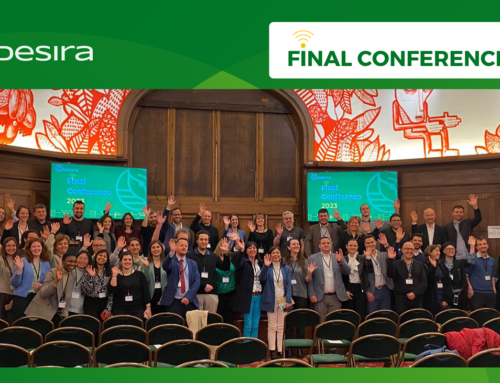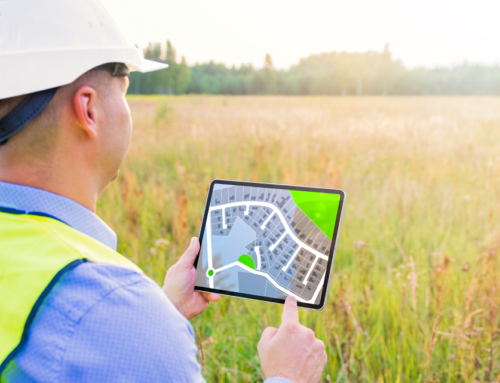Author: Gianluca Brunori
As stated by the Green Deal, the European Union attributes digitalisation a central role in the ecological transition and sustainable growth. In the proposal for a regulation for the next Common Agricultural Policy, digitalisation is present several times.
However, looking at past reforms, there is a grounded concern that it will end up in a race to replace agricultural machinery. To give the desired effects, it is important to be aware that digitalisation is, first of all, a process of social transformation, which takes place both as an effect and as a driver of technological change1.
Opportunities and risks of digitalisation
The opportunities that digitalisation offers are well-known, such as making processes more efficient, replacing the most difficult or painful tasks of human labour, reducing the impact of adversities, facilitating the market integration of companies, and fostering learning processes and bottom-up innovation.
Some of the threats are known as well, especially for those that are left behind. Other threats, however, are less known. For example, the design of technologies reflecting production models far from local contexts may encourage the adoption of inappropriate production and business models. Skill barriers or uncertain benefits could discourage rural actors from adoption; opaque information can lead to wrong technological choices; and poor communication between subsystems (for example, between hardware and software or between different tools) may bring technological bottlenecks.
A poorly governed digital transformation and may have unexpected social and economic consequences.
Strategies for digitisation
Clear and coherent multi-level strategies for digitalisation are therefore needed. But, how should these strategies be shaped? First of all, it should be recognised that there are many possible pathways to digitalisation. There are unsustainable production models that cannot become sustainable just as a result of digitalisation2, and in some cases, digitalisation could support or even make unsustainable production systems emerge.
Consistent with the Green Deal and the Sustainable Development Goals, digitalisation should be linked to ecological transition. To this purpose, digitalisation strategies should specify the conditions necessary for digitisation to take place in a given region. Joint programmes of coordination between education and training bodies at all levels are needed to develop basic, advanced and specialist digital skills.
At the same time, an outstanding organisational effort will be necessary to develop integrated digital ecosystems. Advisory bodies will need to rethink their structures and redesign their services, many of which will go digital; while integrated platform managers become the emerging players in the knowledge system, and technology brokers achieve a central role. The market alone will not be able to create these ecosystems everywhere: appropriate governance patterns and capacity to orchestrate these processes will be needed, as well as a legal framework capable of distributing data ownership rights and the benefits of sharing them fairly.
Policy on digitisation and digitisation of policy
The challenge of digitalisation does not only concern agricultural enterprises and rural communities. The result-based model that the new CAP will introduce underlines the centrality of data in the policy cycle, and requires detailed performance indicators, timely monitoring systems and effective evaluation mechanisms. The administrative aspects of implementation could undergo a revolution, long-awaited by farmers exasperated by bureaucracy.
However, this will be a considerable challenge, as it implies a radical rethinking of the operating mechanisms of the administrative apparatus, the interfaces between beneficiaries and the administrative bodies and the balance of rights and duties. It also involves building trust between the farm and the administrative bodies, that encourage data sharing and prevent monitoring from leading to disproportionate penalties, damage to farmers’ reputation or fraudulent use of information3.
For sustainable digitalisation pathways
The objectives of the new CAP and its implementation model lay the foundations for the principles of sustainable digitalisation: a process of socio-technical transformation that reduces economic and gender inequalities, reduces the pressure on resources, improves workers’ conditions, improves farmers’ incomes, encourages grassroots innovation and provides more information on the production process to all food chain links. To achieve it, it will be necessary to create the basic infrastructure conditions, adapt the technical-organisational solutions to the different contexts, actively promote digital inclusion, orchestrate the development of digital ecosystems and promote new governance models. Sustainable digitalisation will allow the design of transformative, data-driven intervention schemes that stimulate learning processes both by farmers and by public administrations. For the scientific community and the operators in the sector, a new phase is opened, the contours of which are still largely to be drawn.
This article is a summary of the one published by ARC2020. Read the full version here.
1 Kelly Rijswijk, Ellen Bulten, Laurens Klerkx, Joost Dessein, Lies Debruyne, Gianluca Brunori, Ivano Scotti, Manlio Bacco, Margaret Currie, Fabio Bartolini, Daniël Van Der Velden, Silvia Rolandi, Matteo Metta (2020) Digital Transformation Of Agriculture, Forestry And Rural Areas: Developing A Futureproof Socio-Cyber-Physical System. DESIRA deliverable n. 1, https://desira2020.agr.unipi.it/wp-content/uploads/2020/07/D1.1_CAF-report_I.pdf
2 Basso, B., & Antle, J. (2020). Digital agriculture to design sustainable agricultural systems. Nature Sustainability, 3(4), 254-256.
3 OECD (2019), Digital Opportunities for Better Agricultural Policies, OECD Publishing, Paris, https://doi.org/10.1787/571a0812-en.






